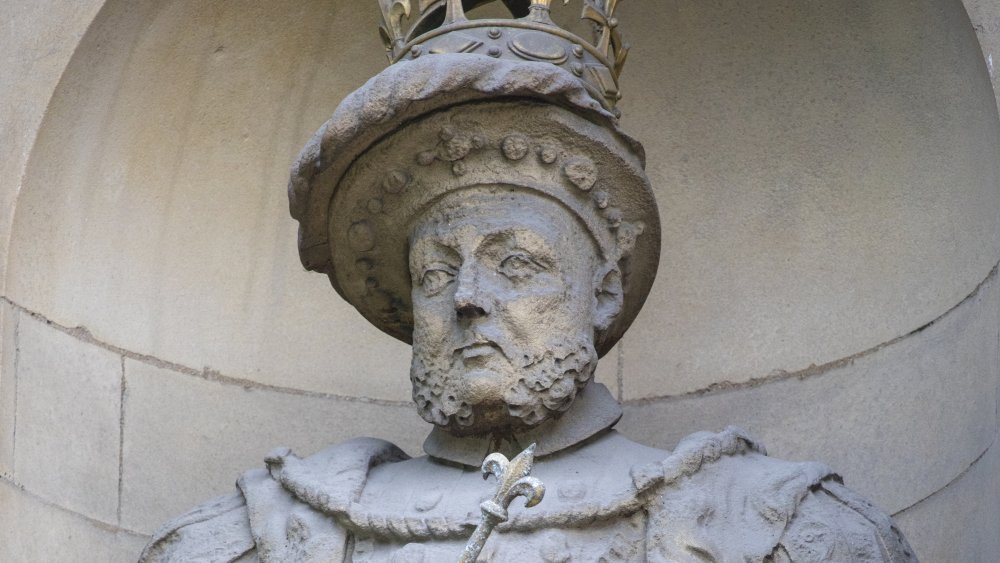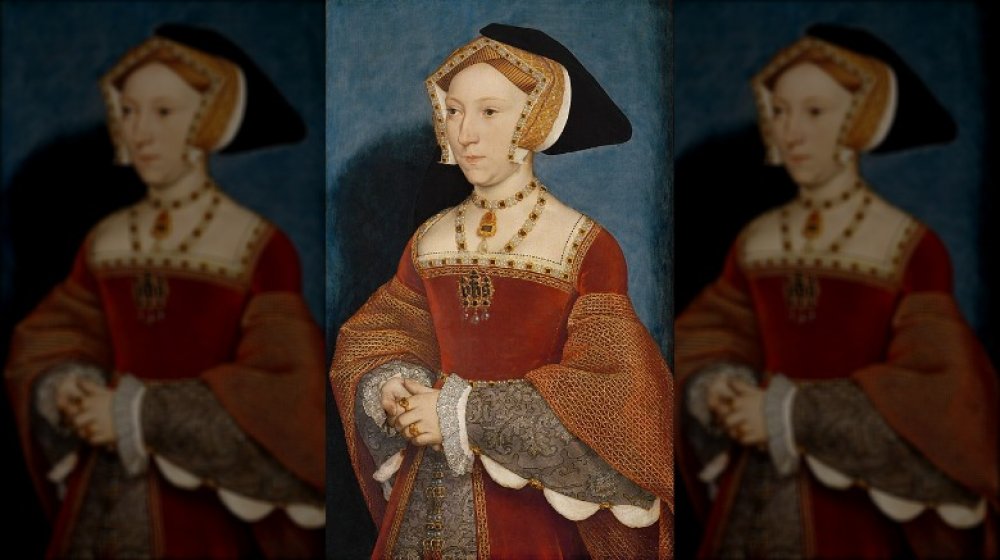The Surprising Place Where Henry VIII Is Buried
It can be helpful, having some life decisions made for you. For instance, the English royals don't have to worry about pre-paying for a funeral, or deciding burial vs. entombment vs. "ashes in a spiffing container on a shelf in Meghan and Harry's guest bedroom." Most of the royal family (or families) shuffle off this mortal coil and straight (after appropriate ceremonies, of course) to whatever passes for eternal rest in Westminster Abbey and St. George's Chapel at Windsor Castle — 30 (and counting) so far.
That shifts a bit for the current occupants of the throne; according to The Independent, Prince Philip, husband of Queen Elizabeth II and Duke of Edinburgh, is well into his 90s and plans to be buried in Frogmore Gardens at Windsor, where he will join (according to CNN) his great-great grandparents, Queen Victoria and her husband, Prince Albert. (So far, there's only speculation about where Elizabeth II will be laid to rest. Stay tuned.)
Henry VII, the Tudor monarch who gave us Henry VIII and all of the drama and spectacle attached thereunto, is among the monarchs whose mortal remains grace the interior of Westminster. What about his son?
He's buried next to his third wife, Jane Seymour
Henry VIII, as we all know, was not a man to be bound by tradition, or at least not by any traditions he didn't like. He broke with the established Christian religion of the day and founded his own church; he divorced and executed and otherwise survived five out of six wives. But even Henry, a man of great power, great influence, and great tummy, died eventually.
Being quite royal, he made plans for a proper monument to himself, a shrine for his eternal rest. As the BBC's History Extra tells us, Henry wanted "effigies of the king and queen as though sleeping," columns, scriptures, depictions of angels and of children scattering flowers, and a statue of the king on horseback, says the Tudor Travel Guide — the usual folderol — but he neglected to accomplish the project in his lifetime. Instead, he was laid to rest in what was to be a temporary vault at St. George's Chapel at Windsor, and there his remains, well, remain, so in practice, not all that temporary. It wasn't until nearly 300 years later that a black marble slab was installed, marking the spot where not only Henry was buried, but also his third wife, Jane Seymour. Jane, you will remember, was the only wife to bear him a male heir: Edward VI, who succeeded Henry on the throne at the tender age of 9. And when he died just six years later, he was buried in Westminster.

